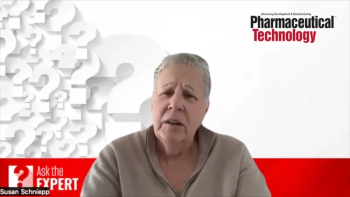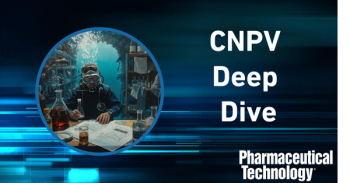
Rising Players in Global Fine Chemicals
Select large custom manufacturers expand capacity, private equity firms buy companies in transition, and players from India and China build their positions.
A mid-year review of the custom manufacturing and fine chemicals market reveals Asian producers continue to invest in manufacturing capabilities in Asia and in Europe. Facing increased competition, some US and European producers are responding by building a manufacturing presence in Asia through partnerships or greenfield projects. Select larger players are expanding with improved business conditions, and certain established players are making transitions.
Lonza
Asian producers advance
Perhaps the most notable of the rising Asian players is NPIL Pharmaceuticals, part of Nicholas Piramal India. Ltd., (Mumbia, India,
With the Morpeth acquisition, NPIL Pharma secures a supply agreement worth as much as $350 million with Pfizer through November 2011. NPIL Pharma already has a sourcing relationship with Pfizer, a seven-year agreement, signed in December 2005 for providing process development and scale-up services to Pfizer's animal health division.
The Morpeth acquisition is NPIL's third acquisition of European-based manufacturing assets. It acquired Rhodia's (Paris,
Dishman Pharmaceuticals and Chemicals, Ltd. (Ahmedabad, India,
These acquisitions follow investments in manufacturing. Dishman recently completed a new 75,000-ft2 R&D center at its Bavla manufacturing site in Ahmedabad, India, which includes CGMP kilo and pilot plants. In May, the Bavla facility successfully completed an FDA inspection for manufacturing the antihypertensive drug eprosartan mesylate for Solvay Pharmaceuticals (Brussels, Belgium,
Like some Indian producers, Dishman is backward–integrating in China. Earlier this year, Dishman acquired an 80,000-m2 industrial plot in Shanghai Chemical Industry Park for two projects: a $10-million investment for producing quaternary compounds and intermediates and an API plant, targeted for completion in 2008.
Others are making their marks. "Indian companies such as Hikal, Jubilant Organosys, Matrix, and Suven have the benefit of the 'high-skill and low-cost advantage' plus the leadership and financial muscle to implement it," says Peter Pollak, a Swiss-based fine chemicals consultant.
Jubilant Organosys, Ltd. (Noida, India,
Matrix Laboratories, Ltd. (Hyderabad, India) is in acquisition mode. It recently acquired a 55% stake in Concord Biotech Ltd., which specializes in fermentation and biocatalytic technology. As a strategy to backward-integrate its intermediates from China, Matrix acquired a 58% stake in Mchem Group in December 2005. Matrix also acquired a 43% stake in the Swiss API technology firm Explora Laboratories SA, formed two manufacturing ventures with South Africa's Aspen Pharmacare, and bought a controlling stake in the Belgium generics company Docpharma NV.
Other recent moves include: Shasun Chemicals & Drugs' (Chennai, India,
A leading API supplier from China, Zhejiang Hisun Pharmaceutical Co. (Taizhou, Zhejiang Province, China) is now supplying vancomycin for Alpharma, Inc. (Fort Lee, NJ) until a new vancomycin manufacturing plant at the Hisun facility in China is completed. The new facility, which will be owned and operated by Alpharma, will incorporate technology purchased from Hisun. Zhejiang Hisun also has a technology transfer agreement with Eli Lilly and Company (Indianapolis, IN) to make capreomycin, an API for treating tuberculosis.
Western-Asian supply lines
The penetration of suppliers from India and China is obliging US and European companies to refine their business models. "Apart from the issues of quality, speed, and value, the two key requisites for success are a position in India or China (a manufacturing subcontracting arrangement is good and an affiliate company is better) and an attractive toolbox of technologies," says Pollak.
Degussa positions in Asia. A case in point is Degussa AG (Düsseldorf, Germany,
The joint venture is part of a strategy of what Degussa terms as "horizontal integration," for leveraging manufacturing assets in Asia for cost-competitive manufacturing of on-patent intermediates, steps in API synthesis, and off-patent APIs. Degussa will focus its existing European custom manufacturing sites for producing high-value regulated intermediates and on-patent APIs.
Consistent with that approach, Degussa agreed to sell Raylo Chemicals, a custom manufacturer of APIs and advanced pharmaceutical intermediates, to Gilead Sciences last month.
"The sale of Raylo is a key step in our strategy to shift production capacity from the Western Hemisphere to Asia," said Klaus Engel, chairman of Degussa's management board.
Earlier this year, Degussa signed a long-term, nonexclusive agreement with the Indian custom manufacturer Hikal, Ltd. (Mumbai, India,
Lonza, Albany Molecular, Aceto, and SAFC position in Asia. Lonza (Basel, Switzerland,
Albany Molecular Research, Inc. (Albany, NY,
Fine chemicals distributor Aceto Corporation (Lake Success, NY,
And, SAFC, the custom manufacturing arm of Sigma-Aldrich Corporation (St. Louis, MO,
Established players expand. As Asia becomes part of the strategy of established players, some too, are expanding.
As part of its strategy to build its large-scale custom manufacturing capability, in May SAFC acquired Honeywell International's Iropharm, a custom manufacturer in Arklow, Ireland. SAFC also recently completed an expansion of its high-potency manufacturing capabilities in Madison, Wisconsin.
Lonza is making investments in biologics. These include the acquisition of UCB-Bioproducts, the peptide manufacturing division of UCB, the construction of a new large-scale mammalian cell-culture plant in Singapore, the addition of mid-scale biologics capacity in Portsmouth, New Hampshire, the addition of a commercial-scale biopharmaceutical manufacturing facility in Visp, Switzerland, and the expansion of clinical scale mammalian manufacturing capacity in the United Kingdom.
Siegfried Group (Zofingen, Switzerland,
On the formulation side, in 2006, DSM (Geerleen, Netherlands,
Saltigo GmbH (Leverkusen, Germany,
Another new identity in the market is Pharmazell GmbH, formed from the former API and intermediate compounds business of the Noveon segment of Lubrizol Corporation (Wickliffe, OH). Lubrizol sold the business to Auctus Management GmbH and former managers of the API business in May. Pharmazell has manufacturing facilities in Raubling, Germany, and Chennai, India.
The entry of private equity firms, typically a sign of a lack of strategic buyers, reflects the changing fortunes in global fine chemicals. Recent deals include Clariant's (Muttenz, Switzerland) sale of its pharmaceutical fine chemicals unit to the private equity firm TowerBrook Capital Partners LP for roughly $89 million. Clariant had built its pharmaceutical fine chemicals business through several acquisitions, most notably the 2000 acquisition of the UK-based specialty and fine chemical company BTP for $1.8 billion.
Earlier this year, Groupe Novasep SAS (Pompey, France) sold its Swiss fine-chemicals business Rohner AG to the private equity firm Arques Industries AG. Novasep acquired Rohner in 2005.
Process R&D: BASF advances boron chemistry
Boron-based chemistry is an effective synthesis tool used in pharmaceutical and fine chemicals manufacturing, and BASF AG (Ludwigshafen, Germany,
Figure 1: Bis(pinacolato) diboron is an example of reagent used in the synthesis of Suzuki precursors.
BASF has developed di-n-butylboron triflate and dicyclohexyl chloroborane, two boron enolate reagents used in diastereoselective aldol-type reactions on a commercial scale. Evans first demonstrated high diastereoselectivities using boron enolates in aldol condensations (1), paving the way for the use of these intermediates in routine organic synthesis, explains Markus Kamieth, Ph.D, and global business manager, inorganic specialties for life sciences, BASF Corporation.
A high-profile example of using boron enolates on a multikilogram scale is in the synthesis of the anticancer agent (+)-discodermolide (2). Kamieth explains that laboratory-scale reactions using boron enolates may involve in-situ generation of the corresponding reagents, which results in major challenges for scale-up to commercial production. Commercial availability will facilitate the use of these reagents on a large scale.
BASF has commercialized a portfolio of reagents, which are useful to synthesize Suzuki precursors. Highlights of this portfolio include: bis(pinacolato) diboron and pinacolborane—reagents for direct borylation to make boronic ester Suzuki intermediates for formation of biaryl structures—as well as highly selective hydroboration reagents such as 9-bora bi cyclo[3.3.1]nonane and catecholborane for alkyl group transfer.
Suzuki coupling reactions typically involve a palladium-catalyzed cross coupling between organoboronic acids or esters and aryl halides to produce biaryl compounds, which have important uses as bioactive compounds. A recent development to make key boronic ester Suzuki intermediates involves the highly efficient direct borylation of aryl halides using bis(pinacolato) diboron and pinacolborane in the presence of a palladium catalyst.
BASF has completed a scale-up to metric tons quantities for methyloxazaborolidine, the so-called "Corey catalyst"(3), which is used for the highly enantioselective reduction of ketones.
BASF gained its position in boron-based chemistry with the 2003 acquisition of certain assets of Callery Chemical Company. The move provided BASF with a manufacturing facility for borane reagents in Evans City, Pennsylvania. The facility manufactures and stores diborane, which is a key intermediate used to produce more than 40 individual borane products. BASF produces these products at multiple downstream plants, including pilot-plant facilities.
References
1. D.A. Evans et al., "Stereoselective Aldol Condensations Via Boron Enolates," J. Am. Chem. So. 103 (11), 3099–3111 (1981).
2. J. Mickel et al., "Large-Scale Synthesis of the Anti-Cancer Marine Natural Product (+)-Discodermolide. Part 1: Synthetic Strategy and Preparation of a Common Precursor," Org. Proc. Res. Dev. 8 (1), 92–100 (2004).
3. E.J.Corey and C.J. Helal, "Reduction of Carbonyl Compounds with Chiral Oxazaborolidine Catalysts: A New Paradigm for Enantioselective Catalysis and a Powerful New Synthetic Method," Angew. Chem. Int. Ed. 34 (15), 1986–2012 (1998).
Newsletter
Get the essential updates shaping the future of pharma manufacturing and compliance—subscribe today to Pharmaceutical Technology and never miss a breakthrough.




